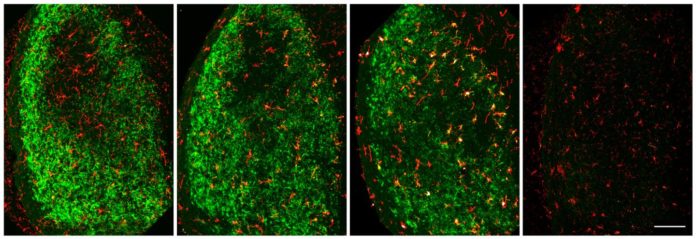In each tissue of the body, dead and dying cells should rapidly be evacuated to keep the development of inflammation, which could trigger the demise of neighboring cells. This removal is done by specific cells that immerse and separate cell garbage, also called phagocytic cells. However, researchers are yet to figure out which cells are in charge of removing neuronal debris and jetsam when the brain or spinal string is damaged.
Scientists at the University of Virginia School of Medicine have found that microglia, specific invulnerable cells in the brain, assume a key part in clearing dead material after brain damage. The study uncovers that microglia eat up the remainders of harmed neurons, which could keep the harm from spreading to neighboring neurons and causing more broad neurodegeneration.
Jonathan Kipnis, chairman of UVA’s Department of Neuroscience, and his colleagues examined injuries to the optic nerve of mice, which cause retinal ganglion neurons to degenerate and leave debris in a distant region of the brain. The researchers found that this debris is engulfed by microglia.
In adult brains, microglia appear to recognize degenerating neurons using some of the same molecules they use to recognize inactive synapses or invading pathogens. Kipnis and colleagues found that, after optic nerve injury, microglia produce “complement” proteins that help the phagocytic cells identify their targets.
The researchers studied what happened after optic nerve injury in mice when microglia did not produce “complement” proteins and found that the microglia did not clear the debris.
Kipnis, director of UVA’s Center for Brain Immunology and Glia (BIG) said, “In the future, we hope to further identify how microglia are activated in response to neurodegeneration and how they then remove neuronal debris. Knowing these mechanisms might allow us to boost the clearance of potentially toxic debris by microglia and limit the spread of neurodegeneration following brain or spinal cord injury.”
The study, which will be published June 25 in the Journal of Experimental Medicine.
